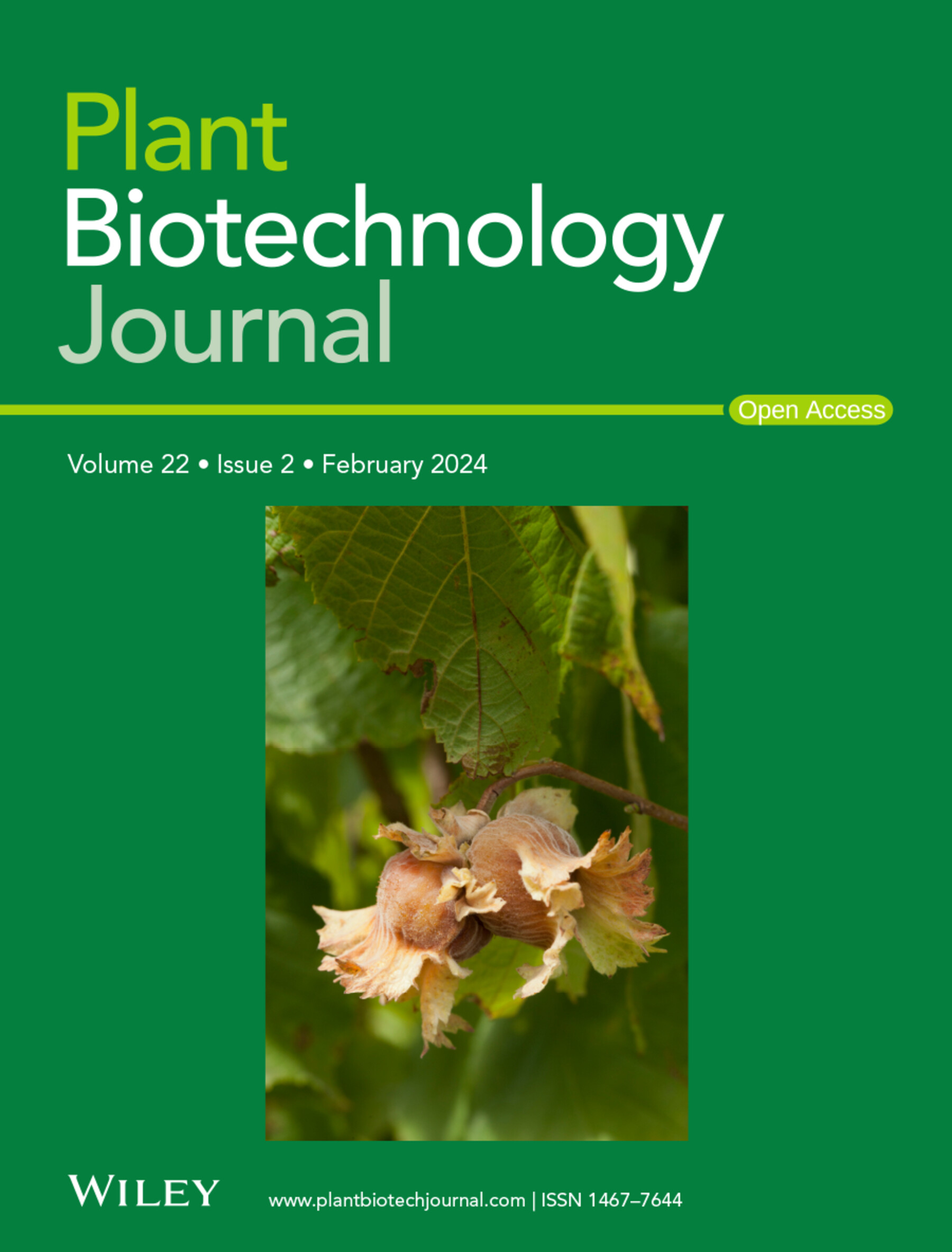Complex engineering of Solanum alkaloids structural diversity in Nicotiana benthamiana.
IF 10.5
1区 生物学
Q1 BIOTECHNOLOGY & APPLIED MICROBIOLOGY
引用次数: 0
Abstract
Transient expression in Nicotiana benthamiana offers a powerful and versatile platform for rapid production of complex specialized metabolites. Steroidal glycoalkaloids (SGAs) and steroidal saponins produced by members of the Solanaceae family are known for their diverse structures and activities including antimicrobial, anticancer, antiviral, and anti-inflammatory. Attempts to reconstitute their complete biosynthetic pathway have been unsuccessful to date. In this study, we identified a different tomato (Solanum lycopersicum) GLYCOALKALOID METABOLISM2 (SlGAME2-NEW) enzyme as a xylosyltransferase in the penultimate step of α-tomatine and dehydrotomatine biosynthesis. The discovery of SlGAME2-NEW facilitated the engineering of tomato SGAs and steroidal saponin biosynthesis in N. benthamiana. Expressing from 9 to 15 genes in combination we efficiently engineered a total of 20 steroidal 'end products' (both alkaloids and saponins) typically produced by tomato and eggplant and ones merely found in wild tomato species. Furthermore, we engineered the biosynthetic pathway of the steroidal saponins uttroside B, dehydrouttroside B, and their stereoisomers [25(S)-uttroside B and 25(S)-dehydrouttroside B]. Production of these metabolites in N. benthamiana opens broad possibilities for examining and exploring their therapeutic potential. This study therefore makes a significant contribution to the application of synthetic biology for producing high-value steroidal metabolites in heterologous plant hosts.本生烟叶生物碱结构多样性的复杂工程研究。
本烟的瞬时表达为快速产生复杂的专门代谢物提供了一个强大而通用的平台。甾体糖生物碱(SGAs)和甾体皂苷是由茄科植物生产的,具有多种结构和活性,包括抗菌、抗癌、抗病毒和抗炎。迄今为止,试图重建其完整的生物合成途径尚未成功。在这项研究中,我们鉴定了一种不同的番茄(Solanum lycopersicum)糖生物碱代谢m2 (SlGAME2-NEW)酶作为α-番茄碱和脱氢番茄碱生物合成的第二步木糖基转移酶。SlGAME2-NEW的发现促进了benthamiana中番茄SGAs和甾体皂苷合成的工程。通过组合表达9到15个基因,我们有效地设计了总共20种类固醇“最终产物”(包括生物碱和皂苷),这些“最终产物”通常由番茄和茄子产生,也仅在野生番茄中发现。此外,我们设计了甾体皂苷外苷B、脱氢外苷B及其立体异构体[25(S)-外苷B和25(S)-脱氢外苷B]的生物合成途径。benthamiana中这些代谢物的产生为检查和探索其治疗潜力开辟了广阔的可能性。因此,本研究为合成生物学在异源植物宿主中产生高价值甾体代谢物的应用做出了重要贡献。
本文章由计算机程序翻译,如有差异,请以英文原文为准。
求助全文
约1分钟内获得全文
求助全文
来源期刊

Plant Biotechnology Journal
生物-生物工程与应用微生物
CiteScore
20.50
自引率
2.90%
发文量
201
审稿时长
1 months
期刊介绍:
Plant Biotechnology Journal aspires to publish original research and insightful reviews of high impact, authored by prominent researchers in applied plant science. The journal places a special emphasis on molecular plant sciences and their practical applications through plant biotechnology. Our goal is to establish a platform for showcasing significant advances in the field, encompassing curiosity-driven studies with potential applications, strategic research in plant biotechnology, scientific analysis of crucial issues for the beneficial utilization of plant sciences, and assessments of the performance of plant biotechnology products in practical applications.
 求助内容:
求助内容: 应助结果提醒方式:
应助结果提醒方式:


